CarEdge saved me over 4,500 dollars on a brand new Honda Pilot. I can't say thank you enough.
Price intelligence
Find a wide range of vehicle listings with market insights on new and used listings near you.


Help us personalize your CarEdge experience — it only takes a second.
Your answers help us personalize your CarEdge journey — we’ll follow up with tips and next steps that match your buying timeline.
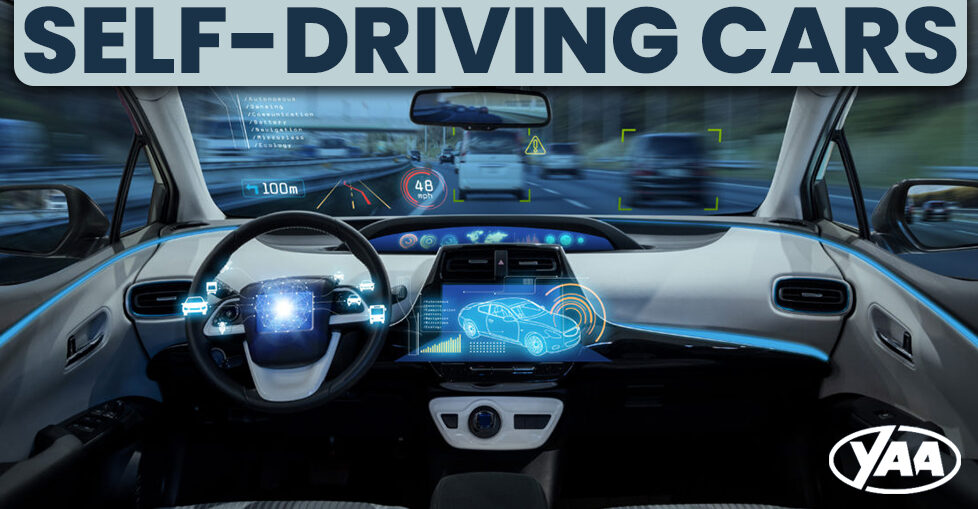

Have you ever seen a driverless vehicle? Not a Tesla, but a moving car, truck or SUV without anyone in the driver’s seat? True self-driving cars are less than a decade away, and key players have established a new industry that’s on the verge of spilling out into the mainstream. Legacy automakers are investing billions of dollars into emerging AI startups focused on driverless tech. These are the big names in autonomous driving, and the automakers they’re teaming up with.
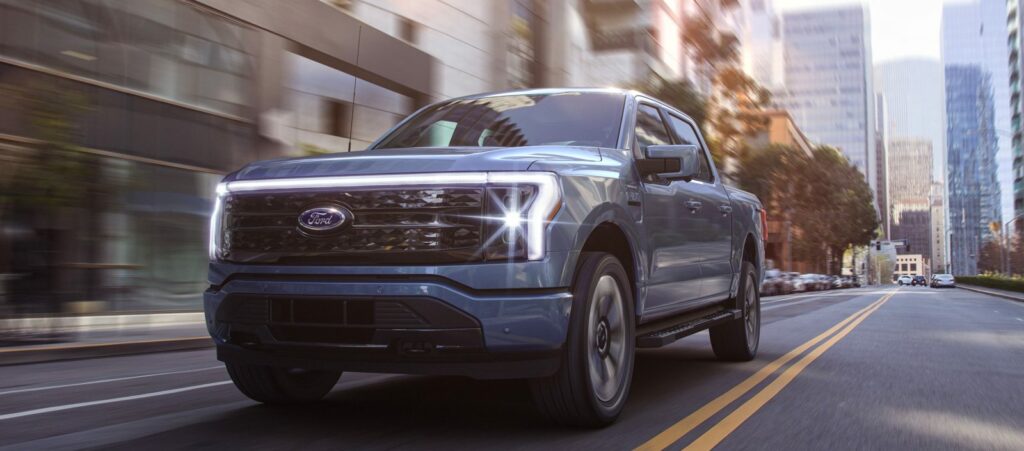
Argo is a Pittsburgh based tech company that is making a name for itself as a leader of autonomous driving technology that is relatively close to mass adoption. Argo has partnerships with Ford, Volkswagen, Walmart and Lyft. The Argo Self-Driving System is already undergoing testing with Ford and Volkswagen vehicles.
Argo’s weakness is more likely a tradeoff that engineers at Argo were willing to accept in exchange for higher probability of success in the near future. And it seems to be working well for them. Argo Self-Driving works on roadways that are intricately mapped beforehand so that the system knows about street-level conditions and safety precautions.
In conjunction with an all-of-the-above sensor approach (LiDAR, radar and cameras), Argo Self-Driving is designed to drive like an experienced driver, but only in certain areas. The benefit of this approach is that it’s much more realistic in the near-term, despite its limited use case.
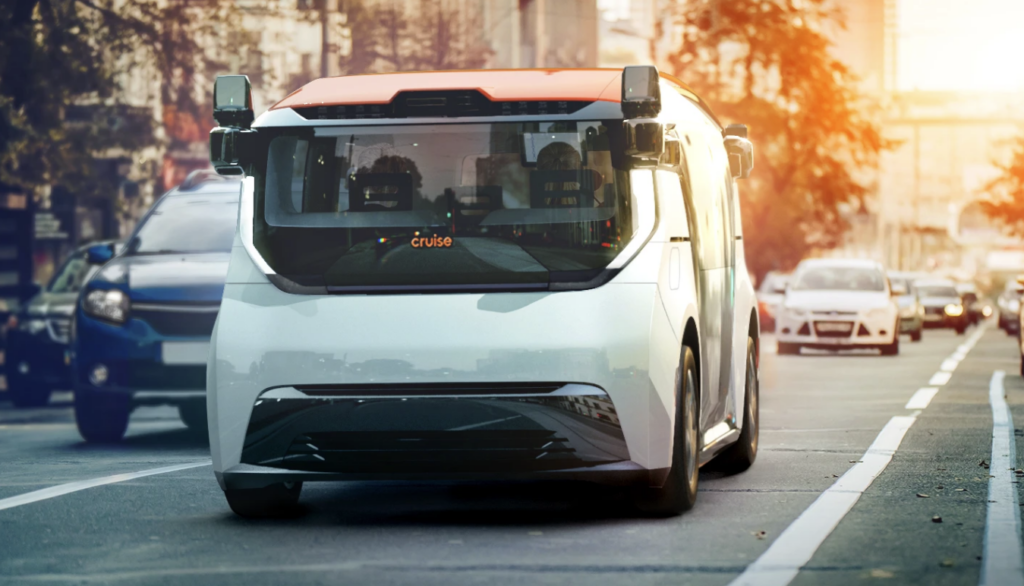
The first generation Cruise Autonomous Vehicle exists on a modified version of the Chevrolet Bolt. That’s because General Motors bought the Cruise startup back in 2016. Rest assured that the next milestone for this promising company is the launch of the Cruise Origin, a driverless pod without a steering wheel. In January of 2021, Honda announced a partnership with Cruise to bring the Origin to Japan. GM announced that the Cruise will begin production in Detroit in 2023. Cruise will certainly be competing head-to-head with Zoox and others with eerily similar product roadmaps.
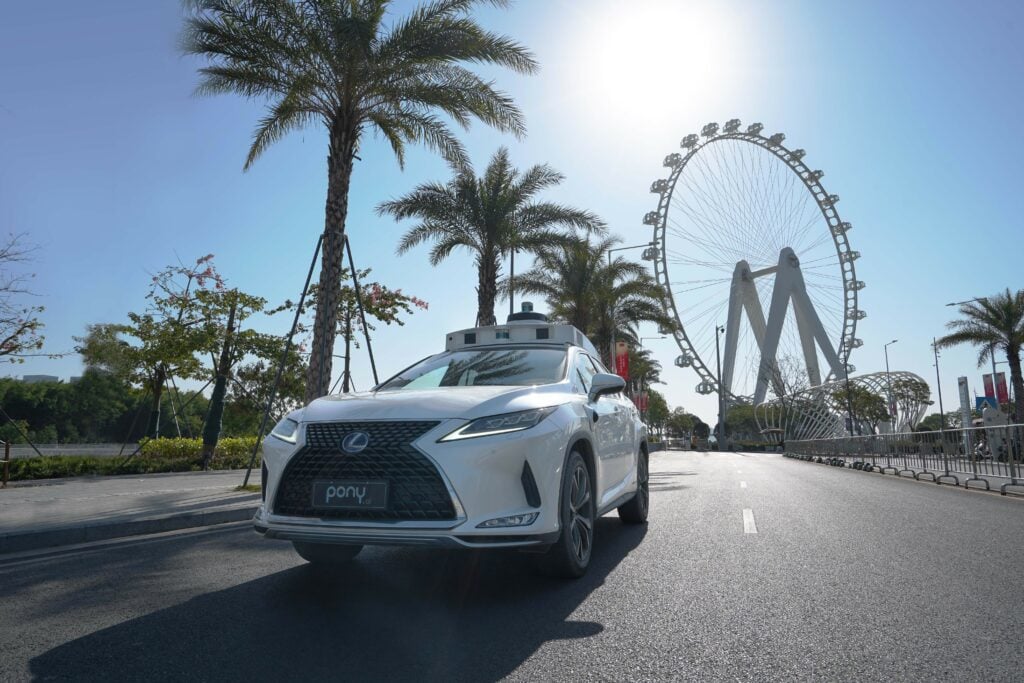
With millions of kilometers of testing completed and a data-driven approach, Pony.AI is playing the long game in autonomous driving. That’s not stopping them from getting off to a strong start. Pony.ai was the first to launch a robo taxi service in 2018, allowing passengers to hail self-driving cars in Guangzhou, Beijing, Irvine, CA, and Fremont, CA. In February 2020, Toyota invested $400 million in the company.
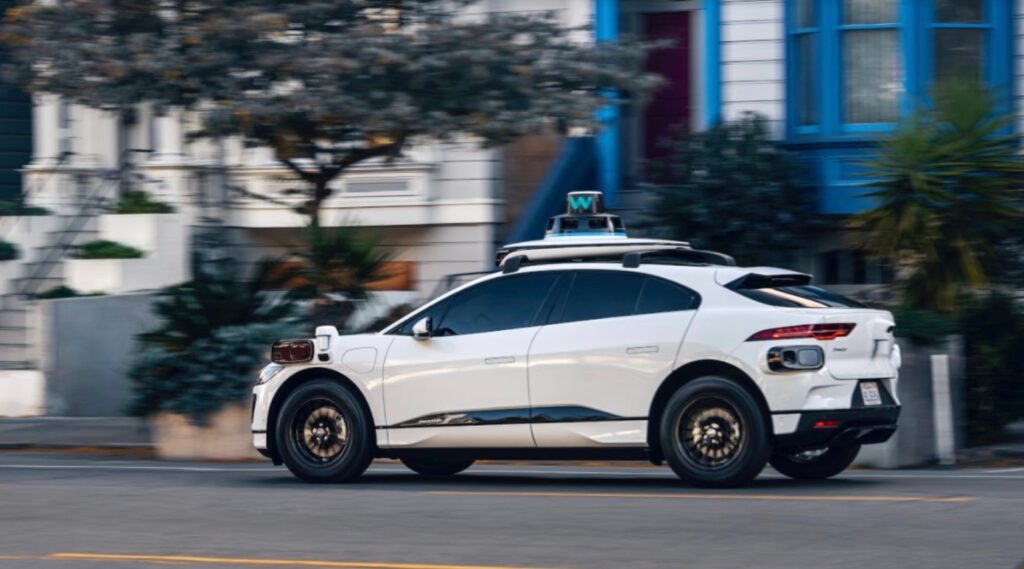
Formerly the Google Self-Driving car project, Waymo is off to a great start with their sensor-loaded approach to autonomous driving. Google started their self-driving research in 2009 back when optimism about near-future autonomy was peaking. Now, Waymo continues as a subsidiary of Alphabet, Google’s parent company.
In 2022, Waymo currently operates ride-hailing driverless vehicles in the Phoenix area, and testing has started in San Francisco and New York. Waymo equips vehicles with a suite of sensors that help the autonomous system paint a picture of the environment around the car at all times. It’s not perfect, but riders say it’s impressive and improving. Interestingly, not all of the vehicles equipped with autonomous driving are fully-electric. Driverless Chrysler vans are a common sight in Phoenix.

Zoox, a recent subsidiary of Amazon, has the goal of providing enjoyable mobility-as-a-service in dense urban environments. Basically, autonomous ride-hailing. Zoox handles the driving, charging, maintenance, and upgrades for their vehicles. It’s like an autonomous taxi, sort of like Waymo. The rider will simply pay for the service. The Zoox vehicle is a passenger-focused capsule designed in-house. We’ll be hearing more about Zoox autonomous vehicles.
The global autonomous vehicle market was valued at $76.13 billion in 2020, and is projected to reach $2 trillion by 2030. Legacy automakers like GM, Ford, Stellantis and Volkswagen are banking on partnerships with AI startups to leapfrog into a future where driverless vehicles are safe, affordable and accessible. How will the likes of Tesla, Lucid, Rivian, and other newcomers innovate and adapt to the changes to come? Time will tell.
Want to know more? Here’s every automaker’s plan for autonomous driving investments.
Buying a Car? Share Your Experience With Others
Getting ready to buy? See how dealers near you have been treating customers at CarEdge Dealer Reviews. When you make a vehicle purchase, don’t forget to share your experience with the CarEdge family. All submissions are vetted by the CarEdge team. Together, we can transform the car buying experience.

Honda is late to the electric vehicle party. Now, Honda is depending on General Motors to get their EV plans off of the drawing board and onto the ground. Will their much-anticipated Prologue electric SUV be worth the wait? The automaker’s first North American EV will undoubtedly be compared to their decades-long reputation for great hybrid powertrains. As the 2024 Honda Prologue nears production, here’s what you need to know about Honda’s plans for EVs.
This was the pre-production concept….
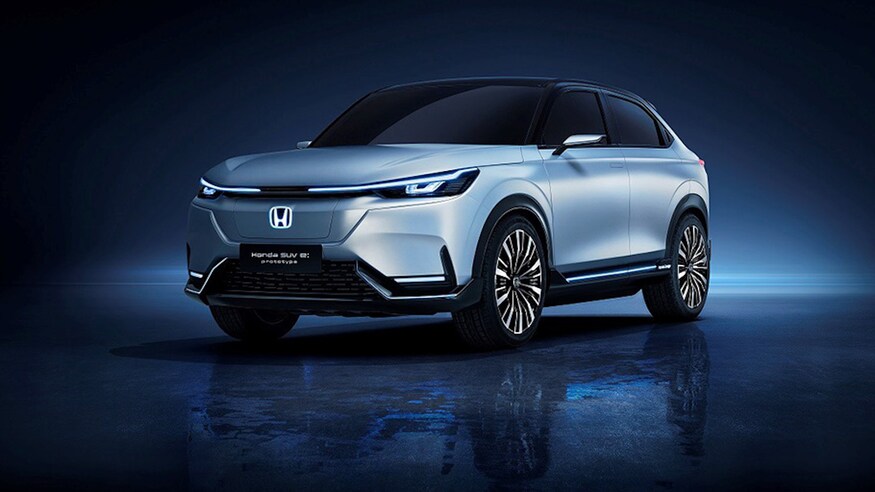
This is the production-ready Prologue EV…

Honda’s electric SUV will be Honda on the outside, and GM on the inside. The automaker didn’t quite play their cards right when it comes to electrification. After stubbornly sticking to internal combustion and hybrid vehicles for the past several development cycles, Honda is now scrambling to make one heck of a U-turn. Why? As a global automaker, Honda pays close attention to the regulatory environment in Europe, Asia, America and beyond. Most of Honda’s major markets have announced timelines for the elimination of new combustion vehicle sales as part of efforts to combat climate change and poor air quality.
The European Union will ban sales of new gas and diesel cars, including hybrid vehicles, starting in 2035. Japan and the United States have also announced a series of policies aimed at encouraging the adoption of EVs. Several European countries are even establishing EV-only zones in densely populated urban centers in an effort to slash emissions for public health. If Honda wants to have a future, they have to go electric.
In 2020, Honda and General Motors announced a partnership that will bring Honda’s first North American electric vehicle to market mid-decade. Why the collab? GM has invested BILLIONS in its new Ultium battery technology and electric motors, and they’re eager to increase their returns by sharing with a competitor in dire need of an electrification jump-start. Honda is far behind the others, even behind other former EV skeptics like Toyota.
General Motors will do everything except design in the exterior and interior of the 2024 Honda Prologue. GM will even build the Prologue in its North American factories. By mid-2023, Honda-branded EVs will be leaving GM plants in Michigan.
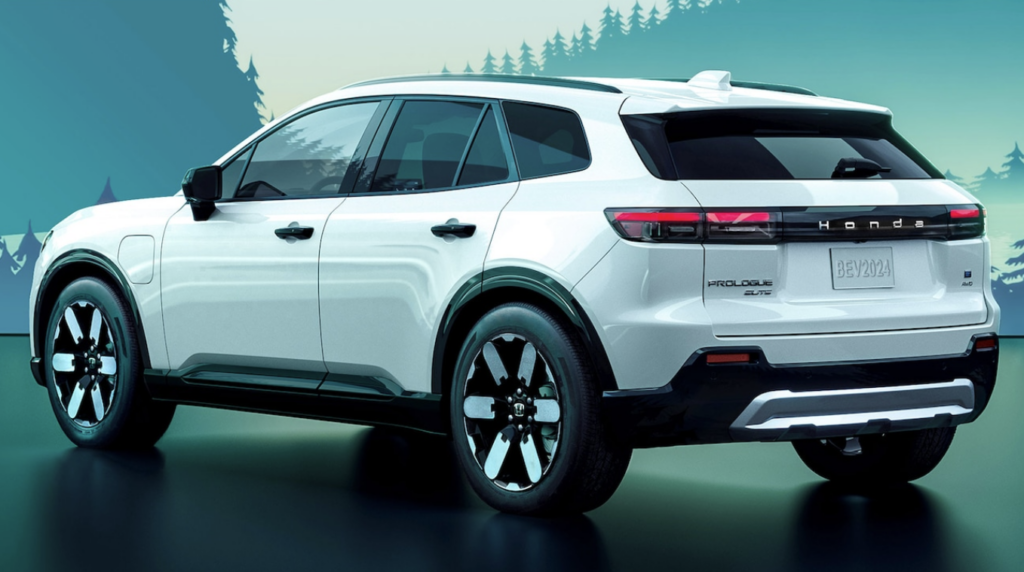
All that we can infer about Honda Prologue specs comes from what’s been announced about the 2023 Cadillac Lyriq, which shares GM’s Ultium platform with the Prologue. The Prologue is likely to be about the size and weight as the Lyriq, since they will share the same drivetrain and battery. Honda is keeping their cards close, so it’s the best we have for now.
Arriving in mid-2022, the Cadillac Lyriq will have a large 100 kilowatt-hour battery and a single rear-mounted permanent magnet electric motor delivering 340 horsepower and 325 lb-ft of torque. An all-wheel drive version will arrive later.
The Lyriq can receive 190 kW charging at a DC fast charger, which is enough to add 200 miles of range in a half-hour. The Lyriq will have a top-end range of about 300 miles, and we expect the Prologue to have similar figures. We recently featured the Cadillac Lyriq with a full CarEdge preview if you’d like to know more about the electric crossover entering production in 2022.
Also, we have everything you need to know about GM’s new Ultium electric platform here. It’s fascinating stuff!
Considering how other Ultium-powered EVs are priced for the 2023 model year and where Honda is positioned in the overall market, we estimate that the 2024 Honda Prologue pricing will start around $45,000. Fully-optioned trims with all-wheel drive are likely to cost between $50,000-$55,000. Lithium prices are largely to blame for the worsening inaffordability of EVs.

Honda does already have a full BEV for sale, but it’s not coming to North America. The pocket-sized Honda ‘e’ is a much-loved city car in Europe. It seems to appeal to the same folks who love their Mini Coopers. The Honda e wouldn’t do well on the sparse interstates of America. It only has 137 miles of range.
General Motors is providing the Ultium platform for an Acura EV that will arrive shortly after the Prologue. Nothing else is known about the Acura EV, but it will likely share all of the same underpinnings as the Honda Prologue SUV.
Still, Honda has jumped on the all-EV bandwagon. Or rather, they were left with few options considering the global regulatory environment. Honda’s target for the electrification of its full lineup is planned for 2040. That’s 5 to 10 years behind many competitors, including their partner GM.
Honda updated their Prologue configurator in October to 2024 availability. If that’s too long of a wait, dozens of other EVs will be on sale by mid-2022. In 2022, the Honda Prologue’s direct competitors in the crossover SUV segment are already battling it out for market share. These are the top picks for car buyers eager to get into an electric crossover sooner:
Need an EV in 2022? Here’s the pricing and availability of every electric vehicle on the market in 2022.
We’ll be sure to update this page as more information becomes available. Add it to your bookmarks if you’re excited about the first Honda EV in America!


On March 10, 2022, the United States National Highway Traffic Safety Administration (NHTSA) announced safety standards for vehicles without human controls. The historic announcement effectively eliminates the requirement for human controls in future vehicles designed to be fully autonomous. In a few year’s time, cars without steering wheels may enter production.
“As the driver changes from a person to a machine in vehicles equipped with automated driving systems, the need to keep the humans safe remains the same and must be integrated from the beginning,” said Dr. Steven Cliff, NHTSA’s Deputy Administrator. “With this rule, we ensure that manufacturers put safety first.”
Before the NHTSA rule update, occupant protection standards were written for common, traditional vehicles. You know, the ones with steering wheels. The rule updates the standards to clarify what is required of manufacturers when applying the standards to vehicles without traditional manual controls.
In essence, the rule change permits vehicles to operate without driver controls, as long as automakers continue to provide the same high levels of occupant protection as current passenger vehicles.

The NHTSA’s rule change comes in response to a petition from General Motors’ Cruise division to update the requirements for future self-driving vehicles. The new regulations eliminate the need for manual driving controls (a steering wheel and pedals) in fully-autonomous vehicles. This particular rule pertains to crash safety standards. No steering wheel, no problem.
In February, GM’s petition sought to make the case for NHTSA action.
“This petition both demonstrates how the Origin achieves safety objectives of existing standards, and helps enable future AV regulations. NHTSA has made clear in public testimony and regulatory actions, that in order to consider the development of AV standards, they first need more information from real world AV operations. We believe this petition can help enable that outcome: learnings from the Origin, which is designed to improve overall road safety, can help inform the creation of new, updated regulations and standards.”
GM’s Cruise recently unveiled the Cruise Origin, a purpose-built autonomous pod designed for urban mobility. The Cruise Origin and other autonomous vehicles in development needed the NHTSA to update the rules before embarking on the final stages of development. In fact, most automakers are working on autonomous driving technologies.
At least one automaker has refrained from bringing its level 3 autonomy to the United States because of outdated regulations. In 2021, Mercedes-Benz became the first automaker to get regulatory approval for level 3 autonomous driving on European public roads. For now, Mercedes Drive Pilot is available on 8,197 miles of German highways at speeds up to 37 miles per hour. What makes Mercedes Drive Pilot so special is that it is the first approved consumer-ready system to permit the driver to take their attention away from the road while the vehicle is in motion.
Mercedes-Benz cited the murky regulatory environment in America as reason for the delayed rollout of Mercedes Drive Pilot in the US. Now, Mercedes says it intends to bring level 3 Drive Pilot to American roads later in 2022. The S-Class and all-electric Mercedes EQS are the first models to gain Mercedes Drive Pilot in the US.
BMW also hopes to launch Level 3 features on the 7 Series sedan this year.
See every automaker’s plan for autonomous driving here.
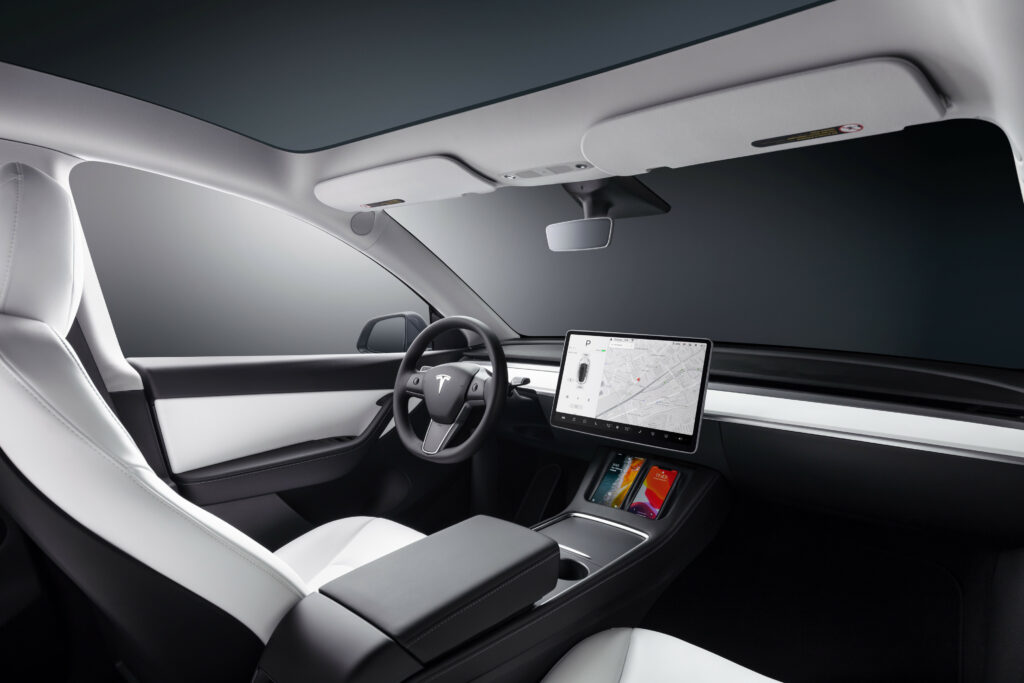
Elon Musk was an early proponent of building cars without driver controls. The updated US regulations will open the pathway for Tesla’s without steering wheels. However engineering autonomy has proven to be a greater challenge than anticipated.
Tesla CEO Elon Musk reflected on the complexity of autonomous driving in a recent interview. “I thought the self-driving problem would be hard, but it’s harder than I thought. I thought it would be very hard, but it was even harder than that.”
That isn’t to say that Tesla is giving up. Tesla remains a leader in automation. The controversially-named ‘Full Self-Driving’ feature is currently available to beta testers with high safety scores. However, criticism abounds from customers who are upset over years of delays for a feature they paid $6,000 to $12,000 for.
Tesla’s vertical integration is one of its greatest strengths. Tesla controls the hardware and software in its cars that will one day support autonomous driving. Little by little, they are making steps in that direction. In 2021, Tesla even eliminated the gear selector in the refreshed Tesla Model S. Apparently, the car should ‘know’ which direction it needs to go. Tesla’s engineers think that today’s Teslas are capable of figuring that out. There are gear selector controls on the touch screen in case the car guesses wrong.
Still, the 2022 update to NHTSA regulations paves the way for Tesla, GM, Mercedes and other automakers to make their autonomous dreams a reality. If only they can figure out how to get it to work. I don’t expect to see a single production car without a steering wheel until closer to 2030. Commercial ride-sharing ventures like GM’s Cruise could, however, bring vehicles without driver controls to American roads within a few years.
Here Is Every Automaker’s Plan for Autonomous Vehicles
What would it take for you to feel safe buying a vehicle without a steering wheel? Wouldn’t that take the fun out of driving? Perhaps folks like me will be in search of aftermarket steering wheel mods in a decade’s time.
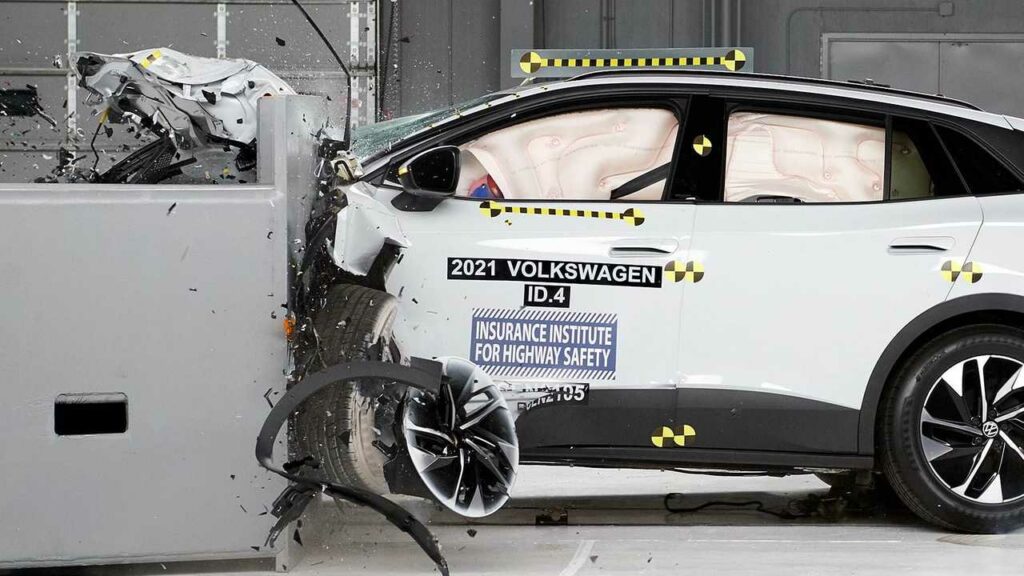
Update 3/8/22: As the Ukraine crisis continues, automakers continue to see impacts. The possibility of a looming raw material shortages is beginning to weigh on semiconductor chip production forecasts, with the real possibility of an even worse chip shortage on the horizon. Metals used in everything from vehicle frames to catalytic converters are soaring to record prices due to the importance of Russia in the global supply. More on the latest developments below.
The ongoing crisis in Eastern Europe is affecting global automakers more than expected. As the conflict drags on into March, automotive suppliers in Russia and Ukraine are experiencing severe disruptions. Logistical nightmares are tumbling out of control as airspace restrictions are enforced. Now, cyberattacks are adding insult to injury. Here’s every automaker impacted by the conflict in Ukraine.
Transport between Europe and countries home to Asian auto manufacturers is facing unprecedented disruption as air space restrictions over Eastern Europe halt 20% of the world’s air cargo. In retaliation to bans imposed on Russia, Russia has reciprocated by banning European carriers from entering Russian airspace, which stretches 5,600 miles from Europe to East Asia. There have also been reports of Russian-based cargo ships being refused refueling at various ports in protest to the invasion of Ukraine.
Furthermore, automotive parts manufacturers located in Ukraine are shuttered, and those in Russia are subject to the effects of sanctions.
Raw materials used in the manufacturing of vehicle frames and electric vehicle batteries are soaring to record highs. Aluminum, palladium, platinum and nickel are most immediately impacted by the Ukraine-Russia conflict. About 40% of the world’s palladium is sourced from Russia. Palladium is used in catalytic converter production. Automotive News reports that auto industry suppliers are well aware of the impending impacts on manufacturing.
“When it comes to metals, Russia companies are major suppliers to Germany. In 2020, they accounted for 44 percent of Germany’s nickel imports, 41 percent of its titanium, a third of its iron, and 18 percent of its palladium.
With production of 108 million tons last year, Russia is the world’s fifth-largest producer of iron ore, according to Credit Suisse, supplying European steelmakers who now face higher prices and possible difficulties procuring the metal.”
Palladium now sits at $3,440 an ounce, 60% above where it was two months ago. Automotive-grade aluminum also hit a record high on March 7. Nickel is at a 15-year high.
Neptune Global chief executive Chris Blasi said that someone will bear the brunt of the record prices and shortage. “There is no other option beyond palladium and platinum for catalytic converters, and you cannot build a car without a catalytic converter,” Blasi said.
Around 70% of the neon used by automotive industry suppliers is sourced from raw materials in Ukraine. Neon is used in the lasers that are critical to the production of semiconductor chips. The ongoing chip shortage may become even worse if the Russia conflict extends beyond a few months. For now, chip makers are relying on existing supplies. Automotive News detailed the neon supply concerns to keep an eye on here.
Although many policy and conflict experts expected worse by now, cyberattacks have disrupted automakers in the past week, causing some plants to briefly close. The automakers themselves are not the only ones at risk. Suppliers critical to the vast automotive supply chain have been hit with cyberattacks, and the result has been felt in recent days.
Volkswagen Group, the parent company of Audi, sources a large portion of its wire harnesses from a Ukrainian supplier. Audi announced production cuts that result from these supply chain difficulties. VW Group brands are among the many who have stopped exports to the Russian market.
The critical wire harnesses that BMW uses for its vehicle production are sourced from suppliers in Western Ukraine. The closure of the suppliers and the associated supply chain bottlenecks have now caused production cuts at BMW’s German plants. BMW also halted production at a factory in Kaliningrad, a Russian exclave situated between Poland and Lithuania. BMW has also suspended vehicle exports to the country.
On March 2, Ford announced a production stop at the Ford Sollers production facility, in which it maintains a 50% stake in partnership with Russian automaker Sollers.
Ford has a 50% stake in three Russian automotive plants. Ford Sollers is the Russian joint venture between Sollers of Russia and Ford. Most of the production at Ford Sollers is for the Ford Transit and similar commercial vehicles. A company spokesperson said that employee safety is their priority, and that effects of sanctions and supply chain disruptions are being assessed.
GM says they are fortunate to have limited supply chain risks as a result of the Ukraine conflict. Still, they are stopping exports to Russia. The move is unlikely to have major impacts for GM, as they sell less than 3,000 vehicles in Russia annually. GM ended production in Russia seven years ago.
On March 2, Honda joined other automakers in pausing sales and exports to Russia. Volvo was the first to make the move.
Interfax News reported that a Russian Hyundai official announced the suspension of output at its plant in St. Petersburg. On March 4, the automaker cited supply issues in its decision to prolong the plant closure. Hyundai is a major force in Russia, selling over 10,000 vehicles per month on average (12% market share).
The UK automaker announced that it is ceasing shipments of vehicles to Russia, effective immediately. Last year, Jaguar Land Rover sold 6,900 vehicles in Russia. A spokesperson said Jaguar Land Rover’s priority was “the wellbeing of our entire workforce and their families, as well as those within our extended network”. The statement went on to cite global supply chains and sanctions. “The current global context also presents us with trading challenges, so we are pausing the delivery of vehicles into the Russian market and continually monitoring the situation on behalf of our global customer base.”
Global auto manufacturer Magna announced the closure of its six Russian plants on March 7, citing “the unfortunate situation in Ukraine.” Magna Spokeswoman Tracy Fuerst shared the company’s support for the Ukrainian people. “Although we don’t have facilities in Ukraine, we have the privilege of working with thousands of Ukrainian colleagues in our Magna operations around the world as well as those from Russia who share the same values of human rights, diversity and inclusion,” Fuerst said. The Canada-based automotive supplier builds parts and entire vehicles for brands ranging from Toyota to Mercedes-Benz.
Mercedes-Benz sources multiple components from suppliers in Ukraine. Mercedes-Benz will reduce production at some European plants this week due to supply shortages. Mercedes sources many components from suppliers in Ukraine. Production shifts will see cuts, but the automaker does not expect to fully stop production outside of Russia. Mercedes is halting production at its Russian plant and pausing the export of passenger cars and vans to the country. They cite sanctions as the cause of the move.
Following Volvo’s lead, Mitsubishi announced that it will halt production and sales of their vehicles in Russia, effective March 1st. Mitsubishi has 2.2% market share in Russia.
Stellantis established a task force to identify disruptions from the ongoing conflict. Stellantis CEO Carlos Tavares said that the automaker has 71 employees in Ukraine. They are ensuring compliance with the rapidly-evolving sanctions in place.
Stellantis, the result of a merger between Fiat Chrysler and Peugeot, produces and sells the Peugeot, Citroёn, Opel, Jeep, Fiat brands in Russia. In January, Stellantis announced that they will begin exporting Russian-made commercial vehicles to Western Europe. The latest developments will likely put a hold on their plans. In 2021, Stellantis brands had just 1% market share in Russia.
On March 2, Toyota announced an indefinite pause in production at its Russian factory. Toyota produces about 80,000 vehicles at its St. Petersburg plant. They are also pausing imports into Russia.
All 14 domestic factories were closed on February 28 after critical supplier Kojima was taken down by a cyberattack that included a threatening message. The supplier was hit with a virus soon after Japan’s government announced support for Ukraine.
Toyota announced that it would resume production at all facilities in Japan the following day. Kojima was unable to operate, and Toyota said they do not stockpile the parts made by the supplier. Toyota relies on 60,000 suppliers, an immense vulnerability that Toyota is surely rethinking.
Volkswagen Group, which includes Audi, Bentley, Cupra, Porsche, Lamborghini, Skoda, SEAT and Volkswagen, continues to face supply chain constraints. VW branded vehicles are produced using wire harnesses sourced in Ukraine. As reserve supplies run low, more production cuts are possible. Production of Volkswagen’s electric vehicles is halted because of supply chain disruptions. The Volkswagen ID.4, ID.3 and new ID.5 electric vehicles are especially affected.
On Thursday March 3, Volkswagen said it is suspending its Russian business until further notice. No cars from VW Group brands will be exported to Russia. VW delivered 216,000 cars in Russia in 2021, about 2.4% of Volkswagen Group’s global vehicle sales.
As supply chain vulnerabilities surface, VW says it will idle the massive Wolfsburg plant. The VW Zwickau and Dresden plants are also closed for the week. Prior to the Ukraine-Russia disruptions, there was already a 6-12 month wait for buyers ordering a Volkswagen ID.4 in North America.
On February 28, Volvo became the first automaker to cease shipments of new vehicles to Russia. The Swedish automaker (owned by Geeley of China) cited their desire to avoid possible conflicts with the rapidly changing sanctions being imposed on Russia by the European Union, United States, and allies. Volvo sold 9,000 cars in Russia in 2021.
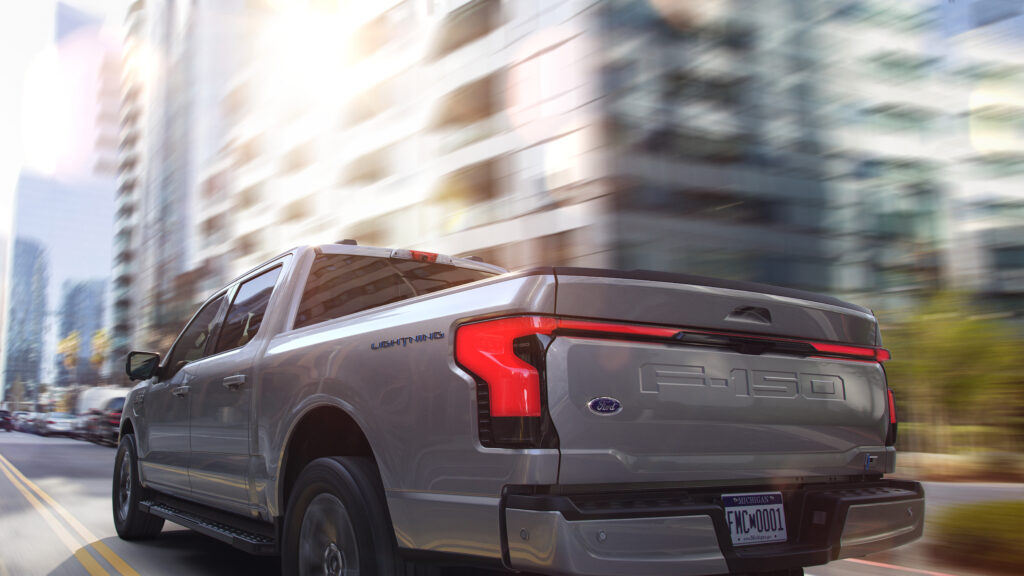
The Russia-Ukraine conflict adds a new dimension to the production delays and supply chain disruptions that have been dragging on for well over a year. The latest chip shortage forecasts show a delayed recovery, despite earlier optimism. So far in 2022, AutoForecast Solutions has increased their projection of vehicles lost in production due to the chip shortage by 63%, from 767,700 to 1,253,100.
Severe sanctions on Russia and instability in Ukraine may persist far longer than originally expected. Now that cyber security vulnerabilities are being targeted, sporadic production halts are becoming the new normal. Automakers impacted by the Ukraine conflict are in for prolonged uncertainty. Automakers may be entering a period of disruption being the new normal, even as the chip shortage will eventually wind down.

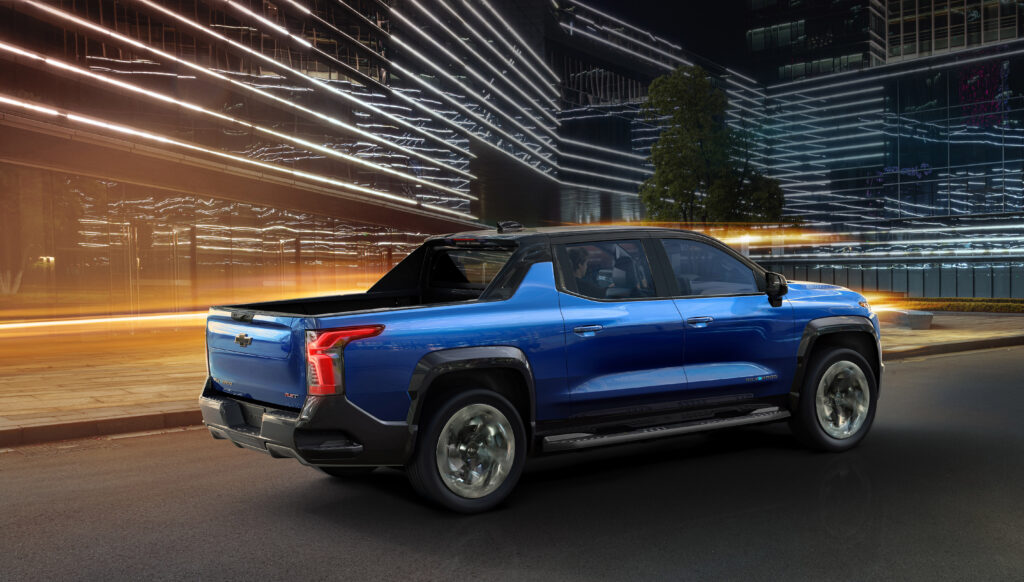
GM continues to sink under the weight of the chip shortage. It’s hitting all automakers, however the latest numbers from GM reveal the extent of the impacts. Automotive News reported that General Motors’ net income is down 39% in the fourth quarter to $1.7 billion. On the bright side, GM achieved a record full-year operating profit. That’s no surprise if you’ve been on the market for a GM vehicle.
In 2021, GM’s annual net income surged 56% to $10 billion. GM’s income is up despite the fact that total vehicle sales were DOWN by 13% over 2020 to 2.2 million. The automaker met previous projections with adjusted earnings of $14.3 billion. Total revenue increased 3.7% to $127 billion.
Although total sales and quarterly profits were down, vehicles sold for much higher prices. In the fourth quarter, GM’s average transaction price was $50,149. That’s up 15% year-over-year. At CarEdge, we’ve been pointing out the disappearance of incentives as dealers and automakers look to squeeze every dollar out of every sale. In Q4, incentives fell 65 percent to $1,813 per vehicle, according to TrueCar.
GM cited lower-margin cars as a contributing factor to profit declines. Could this be a side effect of the massive capital investments in electric vehicles? probably. All those batteries and rolling computers can’t build themselves…yet. GM plans to spend $35 billion in just four years on electrification.
As 2021 came to a close, GM had just 199,662 vehicles in stock or in transit to dealers. That’s less than half of what GM had this time last year, and one-third of inventory at the end of 2019.
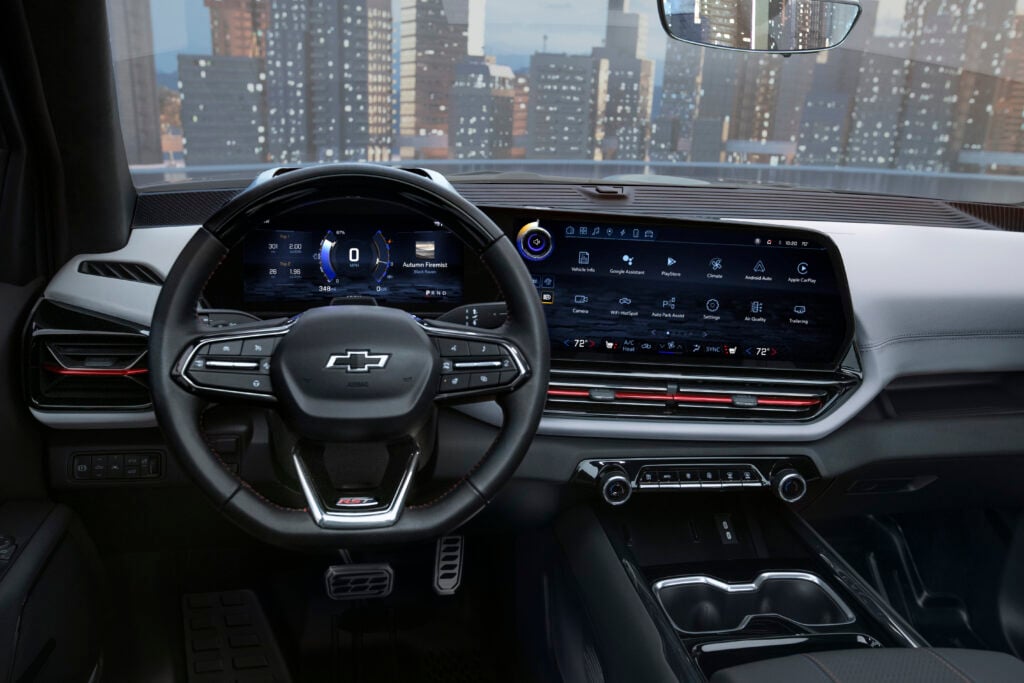
The automaker said it expects its 2022 adjusted earnings “to remain at or near record levels,” between $13 billion and $15 billion.
General Motors CEO Mary Barra sees electric vehicles as essential to GM’s growth strategy. Automotive News reported that GM aims to deliver 400,000 EVs in North America through 2023. During the recent quarterly shareholder meeting, Barra reiterated the automaker’s commitment to spending $35 billion on electric vehicle development by 2025. She said that this will culminate in the launch of 30 EV models globally by the end of the same year.
General Motors finds itself in a bit of an odd situation. profits are down by 39%, yet they’re selling vehicles for a lot more money. If the chip shortage fades away quickly (as unlikely as that may be), would GM shoot to the top of the pack? We’ll learn a lot about GM’s path forward as Q1 progresses.